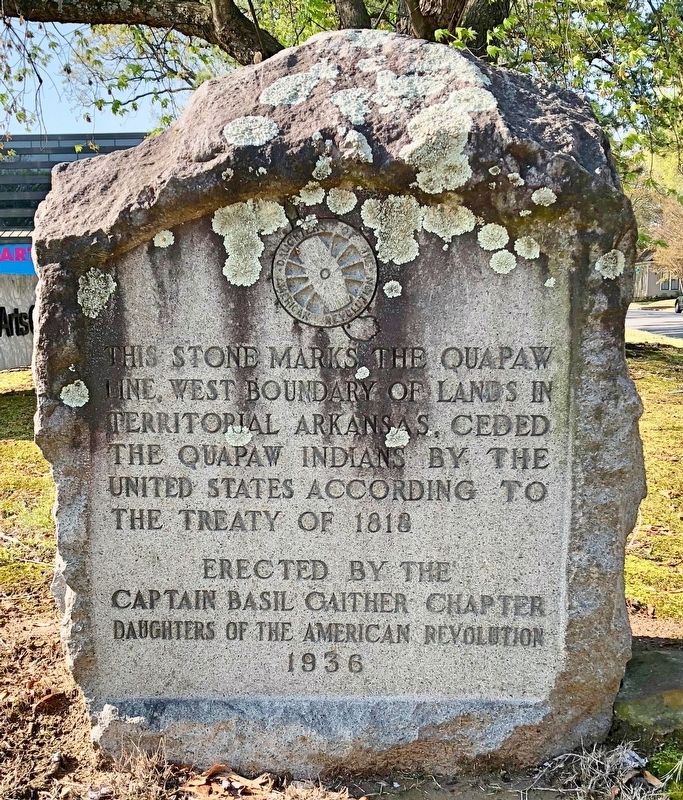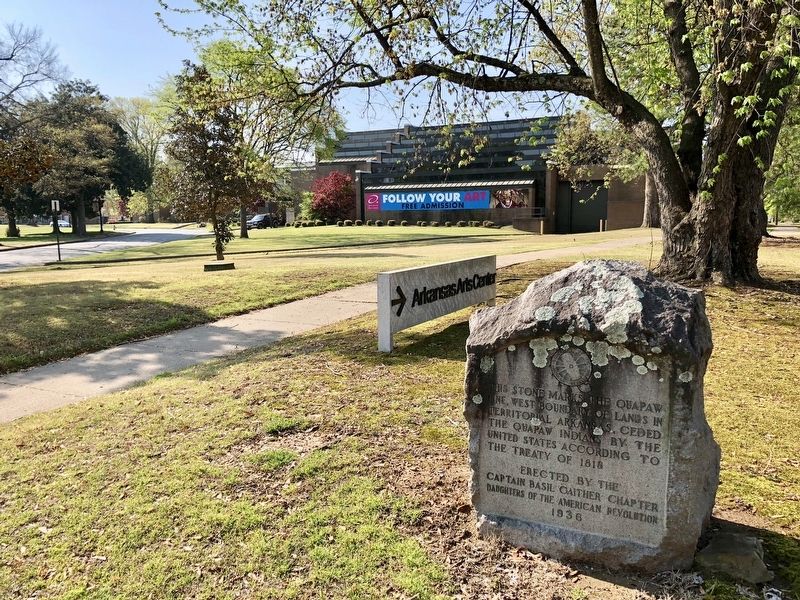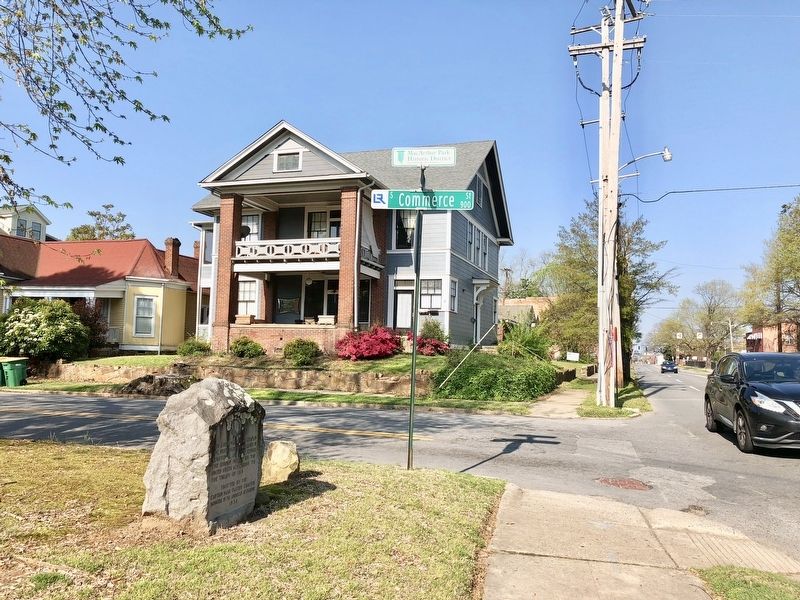MacArthur Park in Little Rock in Pulaski County, Arkansas — The American South (West South Central)
The Quapaw Line
Erected 1936 by the Captain Basil Gaither Chapter Daughters of the American Revolution.
Topics and series. This historical marker is listed in these topic lists: Native Americans • Notable Places. In addition, it is included in the Daughters of the American Revolution series list. A significant historical year for this entry is 1818.
Location. Marker has been reported missing. It was located near 34° 44.37′ N, 92° 16.022′ W. Marker was in Little Rock, Arkansas, in Pulaski County. It was in MacArthur Park. Marker was at the intersection of East 9th Street and Commerce Street, on the right when traveling east on East 9th Street. Touch for map. Marker was at or near this postal address: 500 E 9th St, Little Rock AR 72202, United States of America. Touch for directions.
Other nearby markers. At least 8 other markers are within walking distance of this location. St. Edwards Church (about 500 feet away, measured in a direct line); The Mehlburger Markers (about 700 feet away); 206th Coast Artillery (Anti-Aircraft) Memorial (about 700 feet away); Johnson House (about 700 feet away); The Arsenal Crisis (about 700 feet away); In Memory of United Spanish War Veterans (about 700 feet away); Thurston House (about 700 feet away); The Little Rock Arsenal (about 800 feet away). Touch for a list and map of all markers in Little Rock.
Also see . . . The Quapaw. Wikipedia entry (Submitted on April 12, 2018, by Mark Hilton of Montgomery, Alabama.)
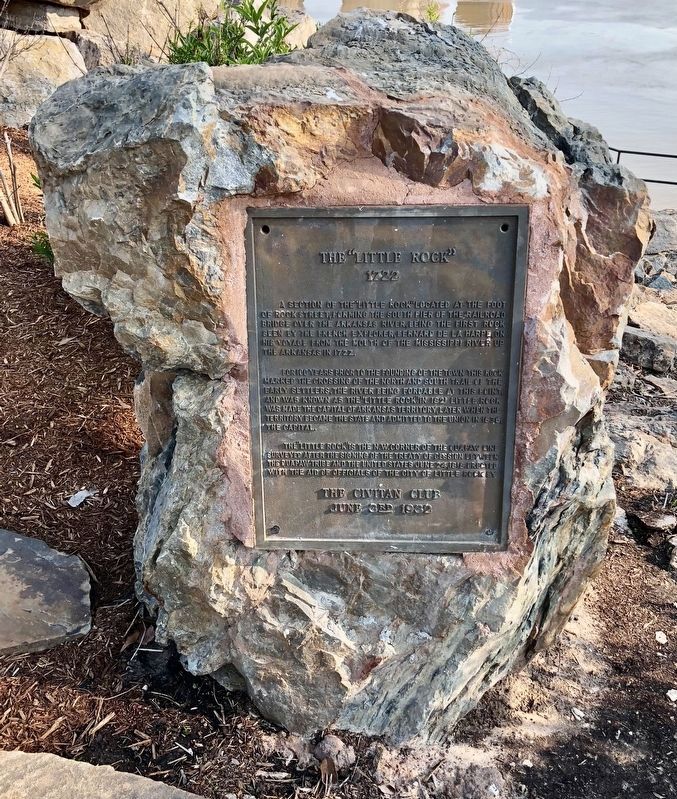
Photographed By Mark Hilton, April 10, 2018
4. This is the "Little Rock" whence came the name of the City of Little Rock.
The Treaty of 1818 & the Quapaw Line:
“Beginning at a point on the Arkansaw river, opposite the present post of Arkansaw, and running thence, a due southwest course, to the Washita river; thence, up that river, to the Saline fork; and up the Saline fork to a point, from whence a due north course would strike the Arkansaw river at the Little Rock; and thence, down the right bank of the Arkansaw, to the place of beginning”
“Beginning at a point on the Arkansaw river, opposite the present post of Arkansaw, and running thence, a due southwest course, to the Washita river; thence, up that river, to the Saline fork; and up the Saline fork to a point, from whence a due north course would strike the Arkansaw river at the Little Rock; and thence, down the right bank of the Arkansaw, to the place of beginning”
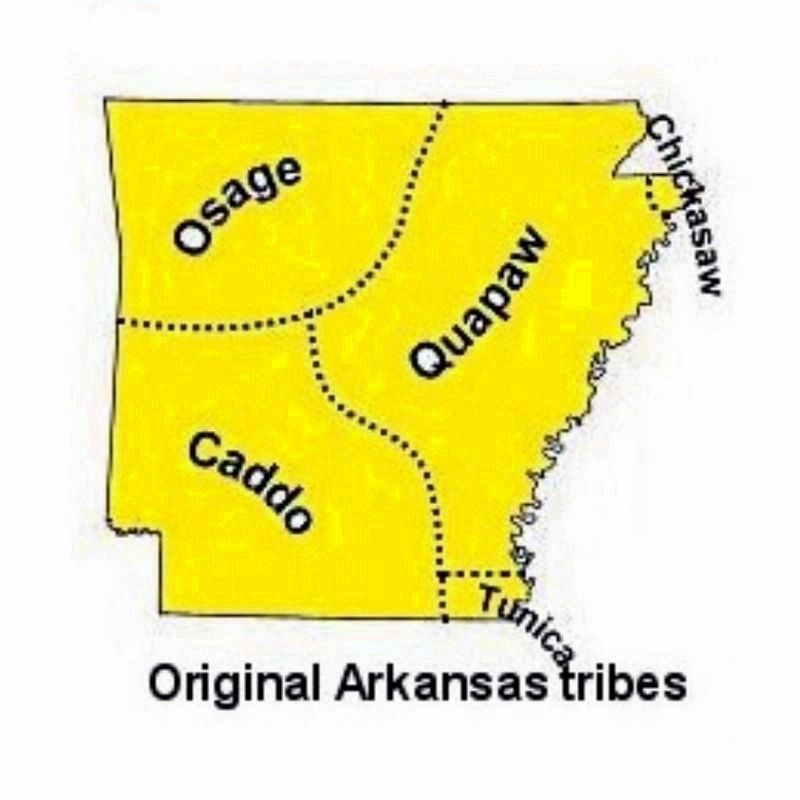
Photographed By Larry Gertner, April 24, 2021
5. In Search of the Quapaw Line
Life in the Rock website entry:
"The part of the boundary of the 1818 treaty that started at “the Little Rock” and traveled due south was known as the Quapaw line and laid at the eastern edge of the tiny settlement of Little Rock (Or Arkopolis)."
Click for more information.
"The part of the boundary of the 1818 treaty that started at “the Little Rock” and traveled due south was known as the Quapaw line and laid at the eastern edge of the tiny settlement of Little Rock (Or Arkopolis)."
Click for more information.
Credits. This page was last revised on March 3, 2024. It was originally submitted on April 12, 2018, by Mark Hilton of Montgomery, Alabama. This page has been viewed 442 times since then and 39 times this year. Last updated on February 21, 2024, by Faith Mullins of Little Rock, Arkansas. Photos: 1, 2, 3, 4. submitted on April 12, 2018, by Mark Hilton of Montgomery, Alabama. 5. submitted on April 24, 2021, by Larry Gertner of New York, New York. • Devry Becker Jones was the editor who published this page.
